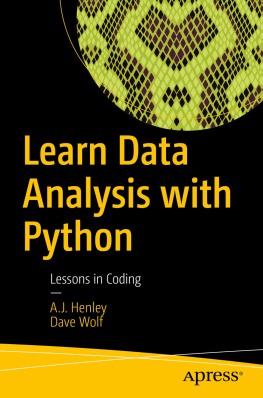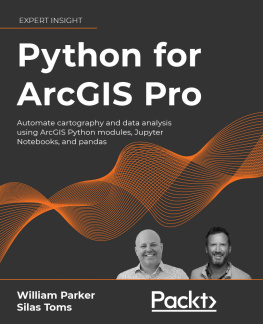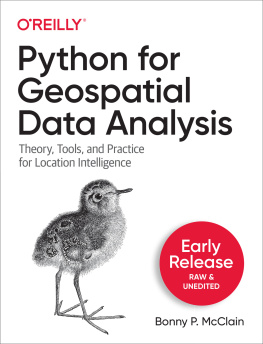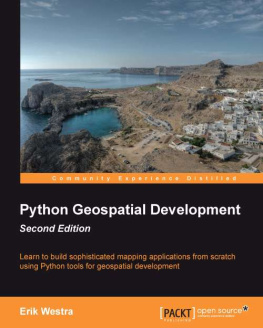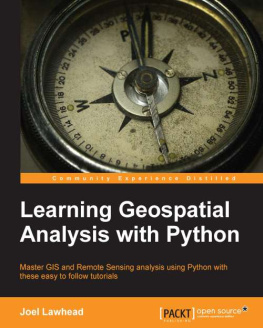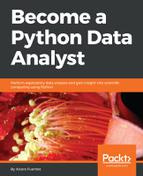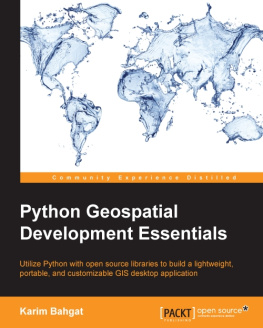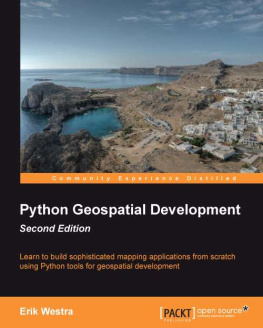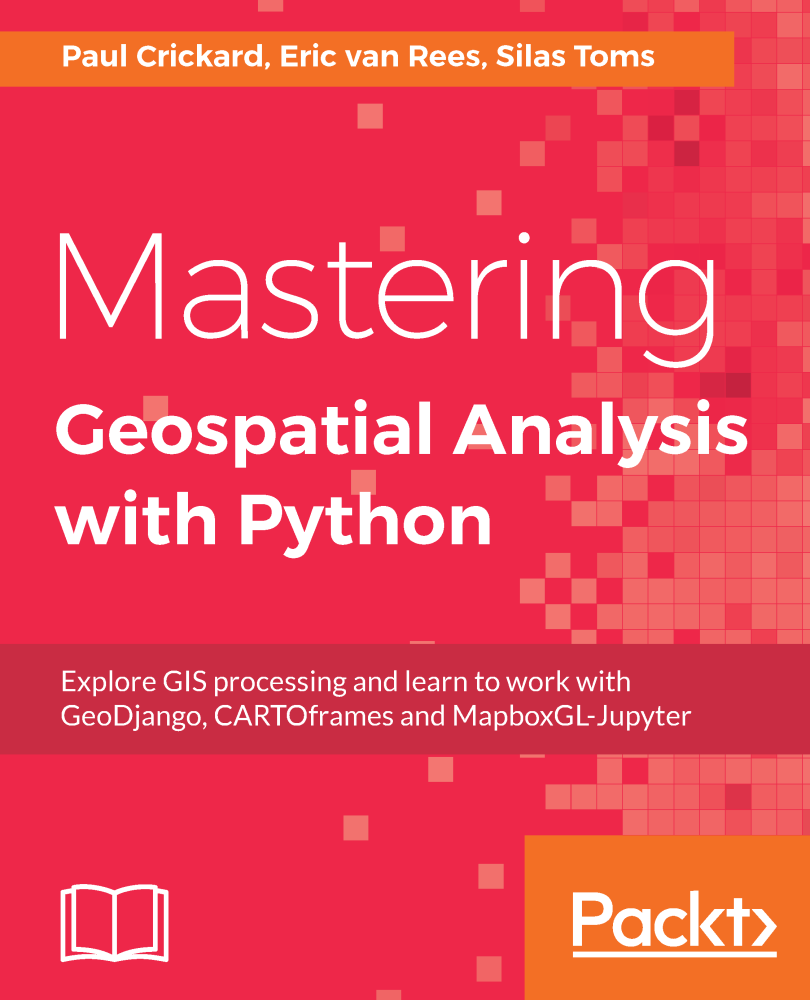Toms Silas - Mastering Geospatial Analysis with Python: Explore GIS processing and learn to work with GeoDjango, CARTOframes and MapboxGL-Jupyter
Here you can read online Toms Silas - Mastering Geospatial Analysis with Python: Explore GIS processing and learn to work with GeoDjango, CARTOframes and MapboxGL-Jupyter full text of the book (entire story) in english for free. Download pdf and epub, get meaning, cover and reviews about this ebook. City: Birmingham, year: 2018, publisher: Packt Publishing, genre: Home and family. Description of the work, (preface) as well as reviews are available. Best literature library LitArk.com created for fans of good reading and offers a wide selection of genres:
Romance novel
Science fiction
Adventure
Detective
Science
History
Home and family
Prose
Art
Politics
Computer
Non-fiction
Religion
Business
Children
Humor
Choose a favorite category and find really read worthwhile books. Enjoy immersion in the world of imagination, feel the emotions of the characters or learn something new for yourself, make an fascinating discovery.

- Book:Mastering Geospatial Analysis with Python: Explore GIS processing and learn to work with GeoDjango, CARTOframes and MapboxGL-Jupyter
- Author:
- Publisher:Packt Publishing
- Genre:
- Year:2018
- City:Birmingham
- Rating:4 / 5
- Favourites:Add to favourites
- Your mark:
Mastering Geospatial Analysis with Python: Explore GIS processing and learn to work with GeoDjango, CARTOframes and MapboxGL-Jupyter: summary, description and annotation
We offer to read an annotation, description, summary or preface (depends on what the author of the book "Mastering Geospatial Analysis with Python: Explore GIS processing and learn to work with GeoDjango, CARTOframes and MapboxGL-Jupyter" wrote himself). If you haven't found the necessary information about the book — write in the comments, we will try to find it.
Explore GIS processing and learn to work with various tools and libraries in Python.
About This Book- Analyze and process geospatial data using Python libraries such as; Anaconda, GeoPandas
- Leverage new ArcGIS API to process geospatial data for the cloud.
- Explore various Python geospatial web and machine learning frameworks.
The audience for this book includes students, developers, and geospatial professionals who need a reference book that covers GIS data management, analysis, and automation techniques with code libraries built in Python 3.
What You Will Learn- Manage code libraries and abstract geospatial analysis techniques using Python 3.
- Explore popular code libraries that perform specific tasks for geospatial analysis.
- Utilize code libraries for data conversion, data management, web maps, and REST API creation.
- Learn techniques related to processing geospatial data in the cloud.
- Leverage features of Python 3 with geospatial databases such as PostGIS, SQL Server, and SpatiaLite.
Python comes with a host of open source libraries and tools that help you work on professional geoprocessing tasks without investing in expensive tools. This book will introduce Python developers, both new and experienced, to a variety of new code libraries that have been developed to perform geospatial analysis, statistical analysis, and data management. This book will use examples and code snippets that will help explain how Python 3 differs from Python 2, and how these new code libraries can be used to solve age-old problems in geospatial analysis.
You will begin by understanding what geoprocessing is and explore the tools and libraries that Python 3 offers. You will then learn to use Python code libraries to read and write geospatial data. You will then learn to perform geospatial queries within databases and learn PyQGIS to automate analysis within the QGIS mapping suite. Moving forward, you will explore the newly released ArcGIS API for Python and ArcGIS Online to perform geospatial analysis and create ArcGIS Online web maps. Further, you will deep dive into Python Geospatial web frameworks and learn to create a geospatial REST API.
Style and approachThe book takes a practical, example-driven approach to teach you GIS analysis and automation techniques with Python 3.
Downloading the example code for this book You can download the example code files for all Packt books you have purchased from your account at http://www.PacktPub.com. If you purchased this book elsewhere, you can visit http://www.PacktPub.com/support and register to have the files e-mailed directly to you.
Toms Silas: author's other books
Who wrote Mastering Geospatial Analysis with Python: Explore GIS processing and learn to work with GeoDjango, CARTOframes and MapboxGL-Jupyter? Find out the surname, the name of the author of the book and a list of all author's works by series.

